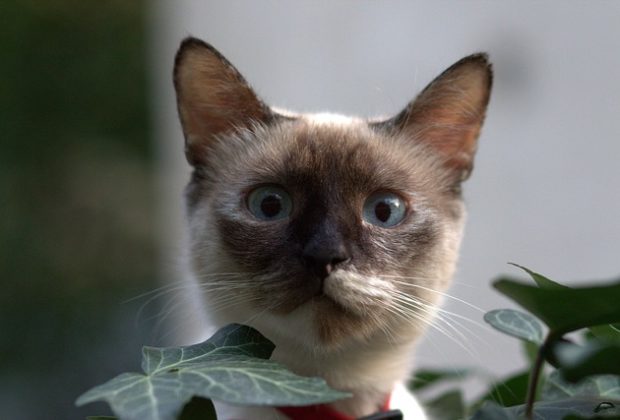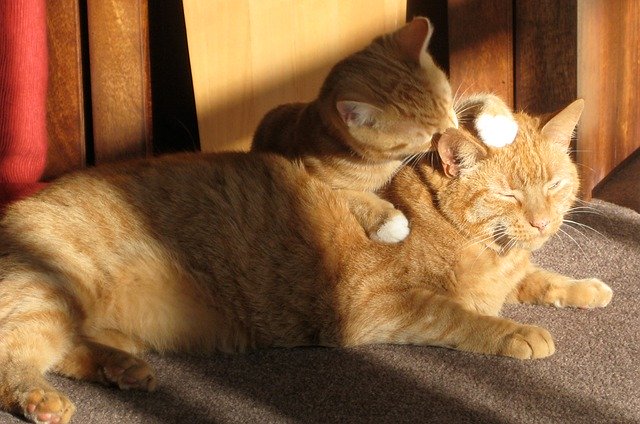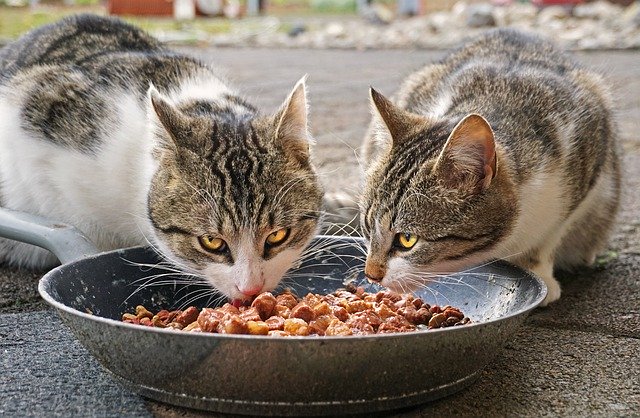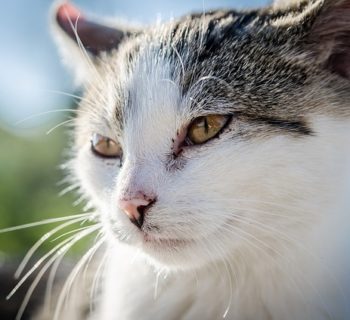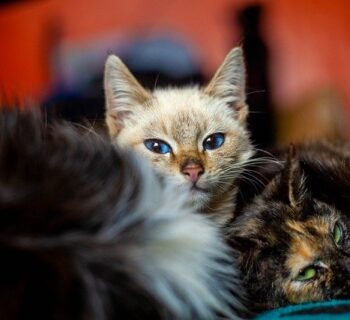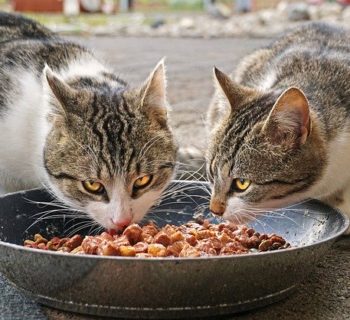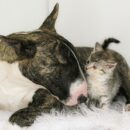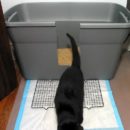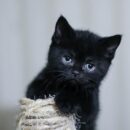While most cat breeds are lovable, and having one around can be a joy, there are still other factors to take into consideration. One such concern is ensuring the particular breed you pick is hypoallergenic.
This is particularly important if you, your spouse, or your child, are allergic to cats. Thankfully, there are still many feline breeds characterized by less hair loss. These breeds hardly trigger allergies and are quick and straightforward to cater to.
We must, however, emphasize that while the breeds on our list shed minimally, they may still not be suitable for people susceptible to cat allergies. The reason is that up to 80% of cat allergic reactions are triggered by the Fel D1 protein protein found in the cat's skin and saliva, not because of their hair.
Also, ensure you research all you can about a breed’s personality, temperament, and likely health conditions before bringing it home.
Cat Breeds That Are Hypoallergenic
Sphynx

This breed originated out of a deliberate effort to breed hairless felines. Although the Sphynx appears bald, it actually has a fine layer of downy hair if you look really closely. However, the amount of hair and dander you must deal with is far too minimal to be a bother.
The breed comes in different colors and patterns and is typically intelligent, affectionate, and probably with the least-impact hair of the modern feline breeds. Just be sure they’re kept warm in cold weather, as the absence of a natural coat makes them poor at retaining heat. This also means they enjoy snuggling, so be prepared for lots and lots of it.
Cornish Rex

Another breed famous for its minimal shedding, the Cornish Rex, has a true coat with short and sparse fur. The fine-textured wavy hair lies close to its body. The hair is soft and rubbing your hands through them feels like stroking velvet.
Their trademark curl results from a gene mutation that allows only the growth of the down layer. Because of their fine coat, most people think the Cornish Rex is hypoallergenic and doesn’t shed at all. Wrong! Like all other minimal-shedding cats, they shed, just not as much as most other feline breeds.
Also, like most other felines with spare fur, the Cornish Rex will need help to retain its body temperature and can easily develop some serious respiratory issues if owners do not take heat-retention steps to keep them warm on cold days. This miniature breed is also very affectionate and smart, a trait it shares with the Sphynx.
Siamese

With their several adorable qualities, it's no surprise this cat breed is high on the list of popular feline breeds worldwide. But that is not the only thing we know them for; the Siamese cats, a breed from Thailand, are expressive, intelligent, super active, and are in the category of feline breeds that shed less hair.
Their coat is fine and short, with minimal shedding making them one of the easiest breeds to maintain. With this cat, weekly grooming with a fine-tooth comb is all you need to do to remove dead fur and evenly distribute its natural skin oils. They are generally friendly to humans, love keeping their owner's company, and enjoy being snuggled, so be prepared.
Devon Rex

While not genetically related to the Cornish Rex, it shares the same thin and curly fur with it. This means that the Devon Rex sheds a lot less than the regular cat, and therefore grooming is easy. The Devon Rex’s large eyes, ears, furs, and elfin-looking face explain its “alien cat” nickname.
The Devon Rex is human-friendly and can quickly grow attached to its owners and family. Plus, they are smart, teachable, and enjoy jumping to high areas of your home. Because of the latter, we highly recommend a cat tree.
Bengal

A complete package of cuteness, the Bengal cat, is one feline you should consider if you’re looking to get a low-shed breed. The cat is a hybrid; part domestic cat, part wild Asian cat. The Bengal cat is high on the list of cat breeds that don’t shed and, as such, require minimal grooming, and you’ll also be less concerned about allergies.
The beautiful and intricate-patterned furs of this large cat breed are short and unlike what you’ll find in most common cat breeds that demand a lot of maintenance. The cats are also super active and enjoy spending time with their human friends.
The Siberian Cat

This breed from Russia is relatively massive for a feline. Most weigh up to 26 pounds, depending on gender, making them one of the biggest cat breeds. Their coat is long and full, and this often gives off the impression that the breed sheds tons of hair. Wrong! The hair of this feline does not fall easily because of its highly oily nature.
The Siberian cat is also a known hypoallergenic and thus considered safe for humans with cat allergies. They enjoy playing and cuddling with their owners and can be highly loyal and affectionate to their loved ones.
They adapt easily to cold weather, with their tight undercoat growing thicker in winter, causing the dead hair to serve as insulation until it is brushed out. Also, the breed is super-intelligent and active for its weight.
Korat

A breed from Thailand, the silvery-blue colored cat, has a short fur with only a single layer. Because of this, there isn't much fur to shed. Also, if you're considering adopting or buying this cat, understand that they can be strong-willed, and therefore training them can be challenging. But it can be done once they learn to trust and respect you.
Korats are also brilliant felines and usually prefer a small circle instead of being friends with just about every stranger.
Japanese Bobtail

A native to the Islands of Japan, the Japanese Bobtail is possibly one of the oldest feline breeds. Their unique bobtail has been compared to many things, including a rabbit’s tail, hook, corkscrew, and pompom.
They are single-coated, and shedding is naturally minimal. Running a fine comb through their skin weekly will remove any dead fur, distribute the hair’s natural oils, and encourage new fur growth.
The breed is both intelligent and social and is quick to learn new tricks and even carry out little tasks. Their triangular and large ears give them their very cute and unique look.
The Tonkinese Cat

Originating from Canada and some areas of the US, the Tonkinese cat emerged from crossing Burmese and Siamese cats – two low-shedding cats. Besides shedding less, they are intelligent and have a solid memorizing ability. They are also highly social and affectionate, and these traits make training them really easy.
LaPerm

A fascinating breed, the LaPerm has a long, thick, and wavy coat. This coat sometimes can make them seem like they can shed easily, but that is not the case with this breed. They rarely shed. They are also highly intelligent and able to carry out tasks and exercises like fetching objects effortlessly.
Also, because they can display almost any color or pattern of fur, they often look like they have lots of hair. This means you don’t have to devote a lot of time or equipment to groom them regularly.
Some other cat breeds that don’t shed
The breeds listed above are only a few of the non-shedding/low-shedding feline breeds around the world. There are several more, and the aim of this article is simply to give you a few ideas on some popular breeds you can consider buying if you’re out to get a no-shed/low-shed breed.
Below, we’ve listed a few other feline breeds that don’t shed as much as most regular ones.
- Oriental
- Birman Cat
- Exotic Shorthair
- Colorpoint Shorthair
- Burmese
- Bombay cat
- Peterbald cats
- Javanese cats
Final Words
Finding the breed of feline that is perfect for you can be challenging. Finding a non-shedding cat breed is even more difficult; thus, the article's goal is to help you narrow your search.
While you want a breed that rarely sheds, you also want one that is social, intelligent, and fun. You want a breed that requires only minimal maintenance/grooming. The breeds listed above offer you all of that and maybe more.
Have you got questions or thoughts on these breeds? Let us know in the comments, and don’t forget to share this article with others.
About the Author
Kirsten Heggarty
Kirsten created The Pet Handbook with the aim of sharing her knowledge about pets, pet food, healthy habits, and more. All of her advice is based on years of her own experience with her pets, and feedback that she has received from grateful readers about her tips. If you want to know more please read the About Me page.

